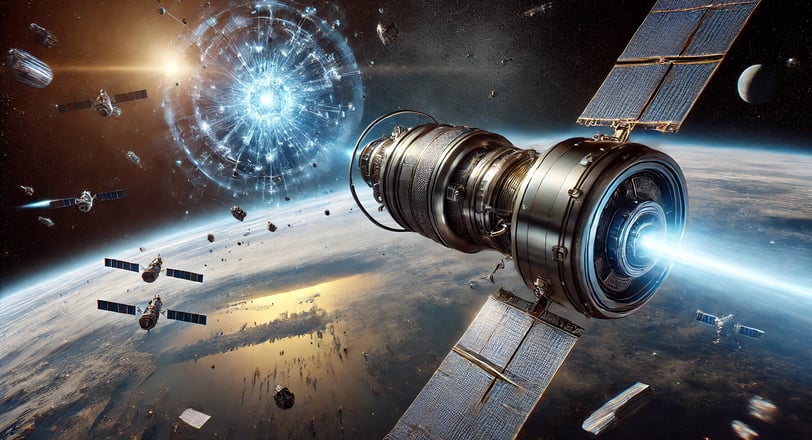Satellites Powered by Solid Metal: The Future of Propulsion and the Use of Space Debris as Fuel
The growing amount of space debris poses a significant challenge to space exploration and safety. An innovative solution emerges with the proposal of satellites powered by solid metal, capable of using orbital debris as a fuel source. This technology could revolutionize the sustainability of space missions and drastically reduce orbital waste.
3/21/20252 min read


The Concept of Solid Metal Propulsion
Unlike traditional chemical or electric propulsion systems, solid metal-based propulsion utilizes a method known as sublimation or cathodic erosion to generate thrust. This concept has been explored in technologies such as Hall-effect thrusters and electromagnetic systems, but the innovation lies in the ability to consume metals present in space debris to power the system.
The operating principle involves the vaporization of metals such as aluminum, magnesium, or iron, which are commonly found in decommissioned satellites and spacecraft. A beam of energized ions or electrons heats the metal surface, converting it into plasma, which is then accelerated to generate thrust.
Technological Advances
Researchers from various institutions are exploring new approaches to make this technology viable. Some of the most recent advances include:
Sustainable Metal Thrusters: Experiments indicate that aluminum can be a viable fuel, as it has high energy density and is widely available in decommissioned satellites.
Space Debris Collection Systems: Equipment could be designed to capture and process metallic debris, allowing for autonomous fuel recharging in orbit.
Improved Energy Efficiency: New metal ionization techniques may enable higher efficiency in converting solid material into propulsive plasma.
Challenges to Overcome
Despite advancements, the implementation of this technology still faces technical and operational challenges, such as:
Efficiency of Metal Sublimation: The development of materials that sublimate with controlled efficiency is essential to ensure uniform and predictable combustion.
Collection and Processing of Space Debris: Creating effective systems to capture, identify, and process useful materials onboard satellites is a complex task.
Compatibility with Existing Systems: Integrating this technology with satellites already in operation would require adaptation of propulsion models and energy management.
Regulatory Challenges: The use of space debris as fuel raises questions about ownership and international regulation.
Potential Applications
If successful, this technology could be applied in various fields, such as:
Long-Duration Missions: Autonomous satellites could operate for years without the need for refueling.
Planetary Exploration: Probes could use local resources on planets and moons to extend their operations.
Space Debris Management: Orbital systems could eliminate waste while using part of it as an energy source.
Conclusion
Solid metal-based propulsion and the use of space debris as fuel represent a promising approach to sustainable space exploration. While challenges remain, advancements in material science and propulsion engineering indicate that this technology could become viable in the coming decades. If successfully implemented, this innovation could not only reduce the amount of orbital debris but also pave the way for more efficient and sustainable space missions.
Explore
Discover diverse topics in one convenient hub.
Connect
Learn
contact@mindstormblog.com
© 2025. All rights reserved.


